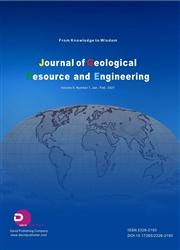Classification and Friction Angle from CPT in Gneissic Residual Soil of Brazil
引用次数: 0
Abstract
The current research presents the results of experiment in situ and laboratory research with the goal of determining the friction angle in residual soil using the CPT (cone penetration test). This experimental research was completed in an area of study, composed of slopes and plateaus, located in the southern region of Brazil, in the Santo Amaro da Imperatriz municipality. An SPT (standard penetration test) and CPT in situ test investigation campaign was conducted and collected from deformed and undeformed samples for physical characterization and triaxial tests. The results made it possible to classify the soils analyzed according to the unified methodology proposed by Robertson that, based on studies provide friction angle values along the hole’s depth, and obtained through the CPT. The friction angle values obtained in the CPT indicated a well-defined trend of high values at the surface, which decrease in the middle of the soil mass and increase again near the healthy rock. The friction angles estimated by the CPT were overestimated when compared to laboratory estimations. This occurrence is explained by the fact that the measured resistance of the field tests is embedded in the cementation and suction plots.巴西片麻岩残积土CPT分类及摩擦角分析
本文介绍了利用圆锥贯入试验确定残余土中摩擦角的现场试验和室内研究结果。这项实验研究是在巴西南部圣阿马罗达Imperatriz市的一个由斜坡和高原组成的研究地区完成的。进行了SPT(标准穿透测试)和CPT原位测试调查活动,并从变形和未变形的样品中收集物理表征和三轴测试。这些结果使得根据Robertson提出的统一方法对分析的土壤进行分类成为可能,该方法根据研究提供沿孔深方向的摩擦角值,并通过CPT获得。CPT测得的摩擦角值在地表呈明显的高值趋势,在土体中部减小,在健康岩附近又增大。与实验室估计相比,CPT估计的摩擦角被高估了。这种现象的原因是现场试验测得的阻力嵌入了胶结和吸力区域。
本文章由计算机程序翻译,如有差异,请以英文原文为准。
求助全文
约1分钟内获得全文
求助全文

 求助内容:
求助内容: 应助结果提醒方式:
应助结果提醒方式:


